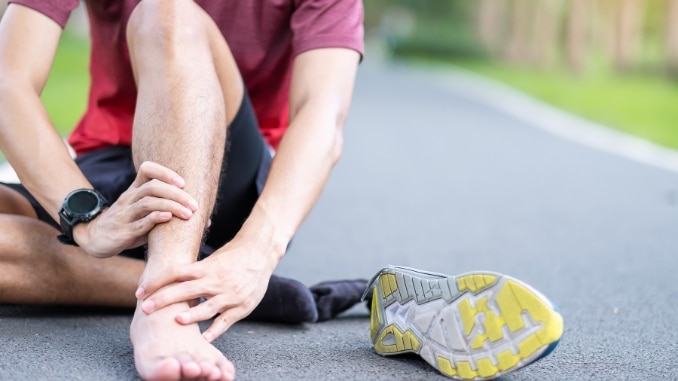
Achilles tendonitis is a common and often painful condition that involves inflammation of the Achilles tendon, the fibrous band connecting the calf muscles to the heel bone. This tendon is crucial in facilitating movement, making it susceptible to overuse and injury. Whether from sports activities, sudden increases in exercise intensity, or other factors that can impact individuals of various backgrounds. Understanding the symptoms, causes, and effective management strategies like achilles tendonitis exercises is essential for those seeking relief and a swift return to their daily activities.
Symptoms of Achilles Tendonitis

1. Pain
Pain is a sign of Achilles tendon injury; you usually feel this pain at the back of your heel or a bit above it. It can hurt more when you’re engaging in sports, engaging in achilles tendon stretches after resting for a while, like when you wake up in the morning.
2. Stiffness
Stiffness and tenderness in the morning are indicators that you have Achilles tendonitis . However, it can improve as you move around but worsen with prolonged or intense exercise . The stiffness can improve as you move around, but it might return if you rest.
3. Swelling
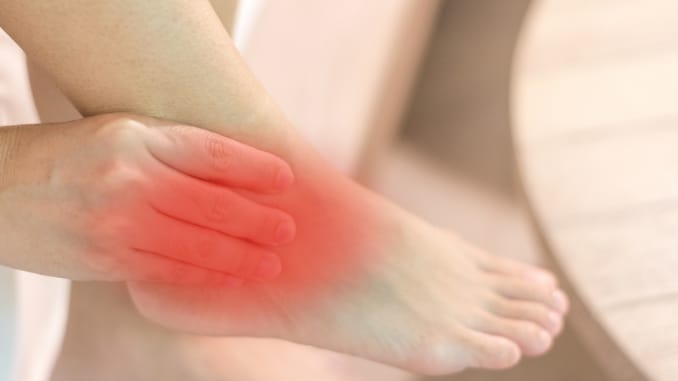
If you have Achilles tendonitis , there might be some swelling around the sore area. This swelling can make it feel uncomfortable and tight. You might even see the swelling—a common sign that something is inflamed, which means it’s irritated or swollen.
4. Reduced Range of Motion
Achilles tendonitis can limit the range of motion in the ankle and foot . People who are affected by it may find it challenging to flex their feet or point their toes fully. This reduced flexibility can contribute to difficulty with activities requiring a full range of ankle motion.
5. Tenderness
Tenderness to the touch is another characteristic symptom. The Achilles tendon becomes sensitive, and pressure on the affected area may cause even more pain, making it difficult to lower your heels.
Heel to Heal: Unlocking Recovery with 4 Achilles Tendonitis Exercises
1. Calf Stretch
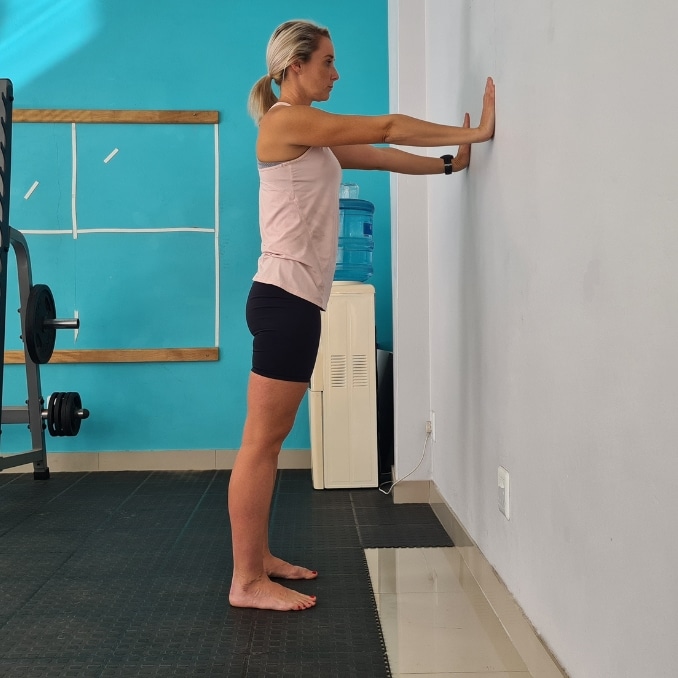 | 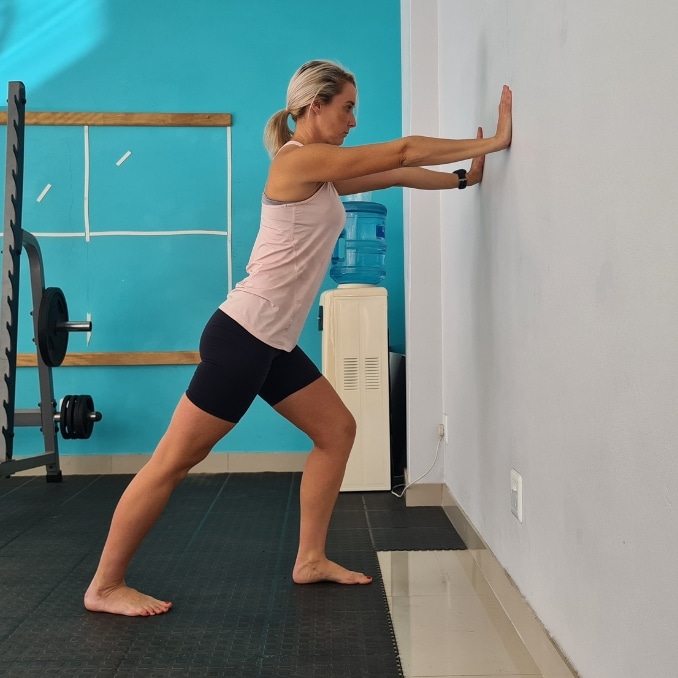 |
For this exercise, use a wall or anything stable and sturdy for support and balance if needed.
Begin in an upright standing position with your hands against the wall. Take a big step back with the good leg, keeping your toes pointing straight ahead and your heels flat on the floor. Bend your affected leg in front as you straighten your back leg, maintaining good alignment with your head, shoulders, and hips. Hold this position for a couple of seconds. Return to the starting position and complete the movement for 5 to 10 repetitions.
2. Single Leg Calf Raise
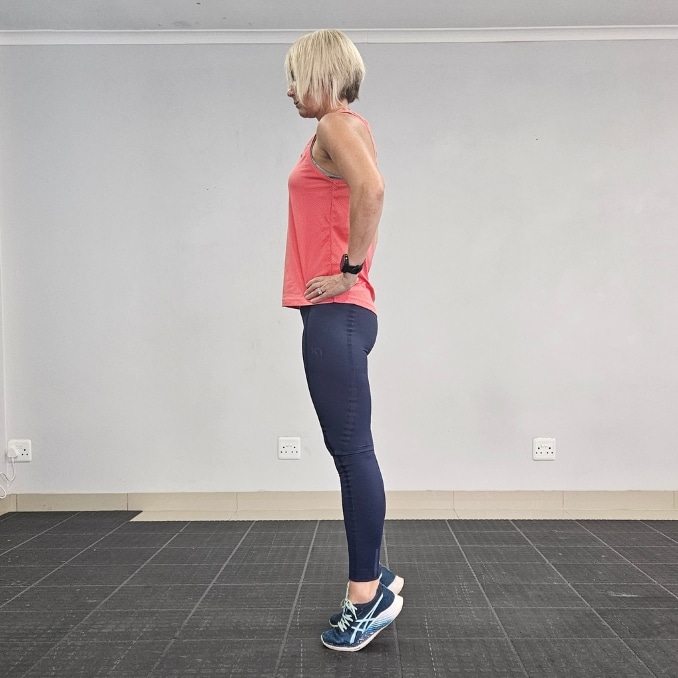 | 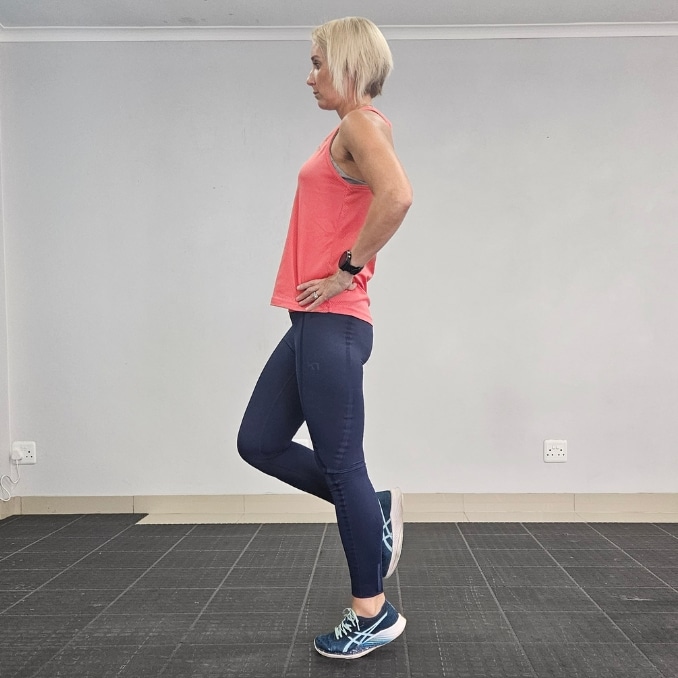 |
For this achilles tendonitis exercises , use a wall or anything stable and sturdy for support and balance if needed.
Begin in an upright standing position , maintaining a good alignment with your head, shoulders, hips, and legs . Place your hands on your hips. Engage your core and raise to your toes on both feet. Shift your weight onto your good leg and bend your knee to the affected leg. Lower your heel back down, following with the affected leg to return to the starting position . Repeat the movement. Complete the movement for 5-10 repetitions.
3. Single Leg Standing Balance
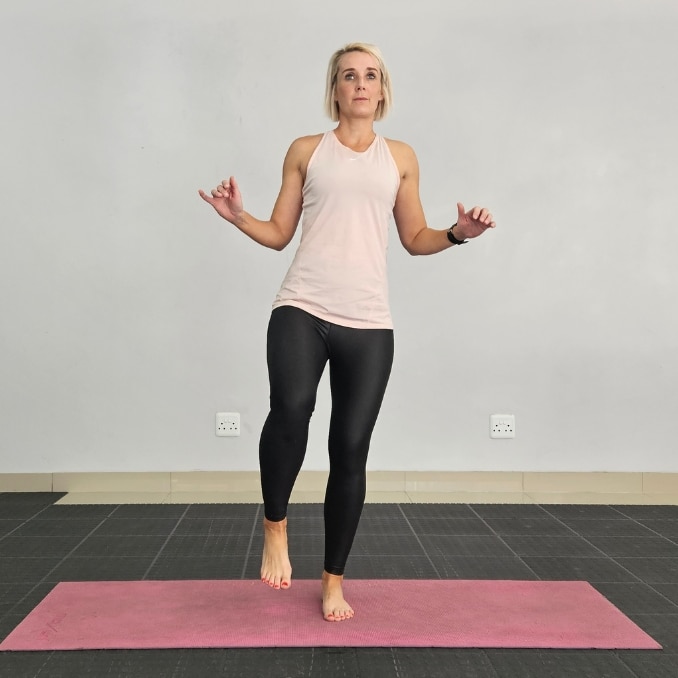
For this exercise , use the wall or the back of a chair for support and balance if needed
Begin in an upright standing position , maintaining a good alignment with your head, shoulders, hips, and legs . Engage your core and activate your glute. Shift your weight onto your good leg and bend your affected knee, while simultaneously keeping your balance on the supporting leg . Hold this position for several deep belly breaths, in through your nose and out through your mouth. Lower your affected foot to return to the starting position . Complete this movement for 2 – 5 repetitions.
4. Calf Rolls
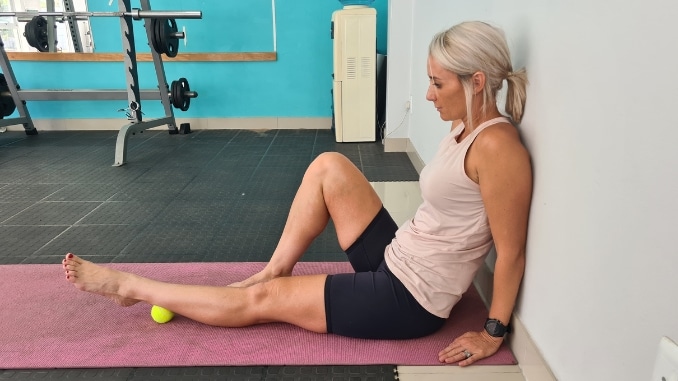 |
 |
Begin in an upright sitting position with your knees bent and feet flat on the floor. Engage your core and place your hands at your sides for support. Extend the affected leg out in forehead and place the massage ball under your calf area. Push from your hands to slightly lift your seat from the floor, then run the ball from the top to the bottom of your calf area and back. Repeat the movement for 2 sets of 10 – 15 repetitions.
If your arms lack strength, lean your back against the wall for support.
Overview of Treatment Options:
1. Ice

Using ice on the affected area helps reduce inflammation and alleviates pain. Cold therapy can be administered through ice packs or ice baths while keeping the affected leg straight, shortening recovery. It is typically recommended for short durations and should be wrapped in a cloth to prevent direct contact with the skin to avoid ice burns.
2.Rest
Rest is a vital aspect of Achilles tendonitis treatment, involving a deliberate reduction or temporary cessation of activities that place undue strain on the Achilles tendon . This pause allows the injured tendon to recover and reduce inflammation. Actions such as elevating the foot , and keeping the knee straight . Recognizing the significance of rest and its impact on recovery is essential, and inexperienced individuals should consult healthcare professionals for their next action.
3. Medication

Anti-inflammatory drugs like ibuprofen or naproxen are commonly recommended for Achilles tendonitis to reduce pain and inflammation by lowering the levels of contributing chemicals. Following recommended dosages is crucial, and communication with healthcare professionals is key for effective pain management. In more severe cases, stronger medications may be advised. However, it’s important to understand that medication is part of a broader treatment plan that includes rest, physical therapy, and lifestyle adjustments for optimal Achilles tendonitis symptom management.
4.Surgery
Surgical intervention might be considered for severe cases of Achilles tendon disorders where conservative measures fail. Surgery may involve removing damaged tissue, repairing the tendon , or, in rare cases, a complete reconstruction. This option is typically reserved for cases with a significant tear or degeneration of the tendon.
5. Exercise
Exercise plays a crucial role in Achilles tendonitis treatment. However, focusing on specific exercises that promote recovery without causing further damage is essential. Eccentric exercises , stretching , and strengthening routines are commonly prescribed. Physical therapy may be recommended to guide patients through a structured, comprehensive program.
FAQs on Achilles Tendonitis
1. How is Achilles Tendonitis Diagnosed?
Typically, diagnosis involves considering both medical history and physical examination. A healthcare professional, such as a doctor or orthopedic specialist, may conduct a physical examination and ask about previous injuries, ailments, and what part of the body hurts to assess the extent of the damage to the Achilles tendon .
2. When to Consult a Healthcare Professional?
It is advisable to consult a physical therapist if you experience persistent, sharp pain, swelling, or stiffness in the Achilles tendon area, especially when these symptoms disrupt your everyday tasks or exercise routine. Seek medical attention promptly if you notice signs or feel a stretch, such as micro tears on your foot or calf, as it could result in a more severe injury, such as difficulty walking or a sudden onset of intense pain.
3. Is Achilles Tendonitis Common in Athletes?
Achilles tendonitis is relatively common among athletes, particularly those who participate in activities characterized by repetitive stress on the Achilles tendon. Sports that require sudden bursts of activity, jumping, or running, such as basketball, soccer, tennis, and track and field, can contribute to the development of Achilles tendonitis. Athletes may be particularly susceptible due to the constant strain and impact on the Achilles tendon during training and competition.
4. How Can Exercises For Achilles Tendonitis Help in Recovery?
The recovery time for Achilles tendonitis varies, ranging from a few weeks for mild cases to several months for more severe conditions. Factors influencing recovery include the severity of the condition, overall health, and adherence to the prescribed treatment plan. These cases may improve with rest and exercises over a few weeks, while moderate cases could take several weeks to a few months for noticeable recovery.
5. How Long Does Achilles Tendonitis Take To Recovery?
The recovery time for Achilles tendonitis varies, ranging from a few weeks for mild cases to several months for more severe instances. At this time, the individual with the injury will have difficulties keeping their legs straight and their knees straight, which prompts them to prop up against a wall for balance. Furthermore, heel raises, seated heel, and a soleus stretch will be difficult to execute. Hence, using things like a wall for balance is recommended for these strengthening exercises.
Conclusion
In conclusion, incorporating targeted strengthening exercises such as heel raises , and the soleus stretch can do wonders in managing Achilles tendinitis or tendonitis. The four exercises outlined—focused on stretching , strengthening, and promoting flexibility—serve as valuable tools for recovery and prevention .
However, it’s crucial to approach these exercises with care, ensuring they align with your individual needs and healthcare professionals’ guidance. Remember, a holistic approach, including rest, proper footwear, and lifestyle adjustments, complements the effectiveness of these exercises.
By consistently integrating these exercises into your routine and embracing a well-rounded approach to tendon health, you empower yourself on the path to relief, recovery, and a resilient Achilles tendon .
Always consult a healthcare professional to tailor these exercises to your condition and ensure a safe and effective journey toward renewed strength and flexibility.
Don’t let chronic pain keep you from walking, running or just enjoying your life. Check out this Achilles Tendinitis Exercise Solution now!

